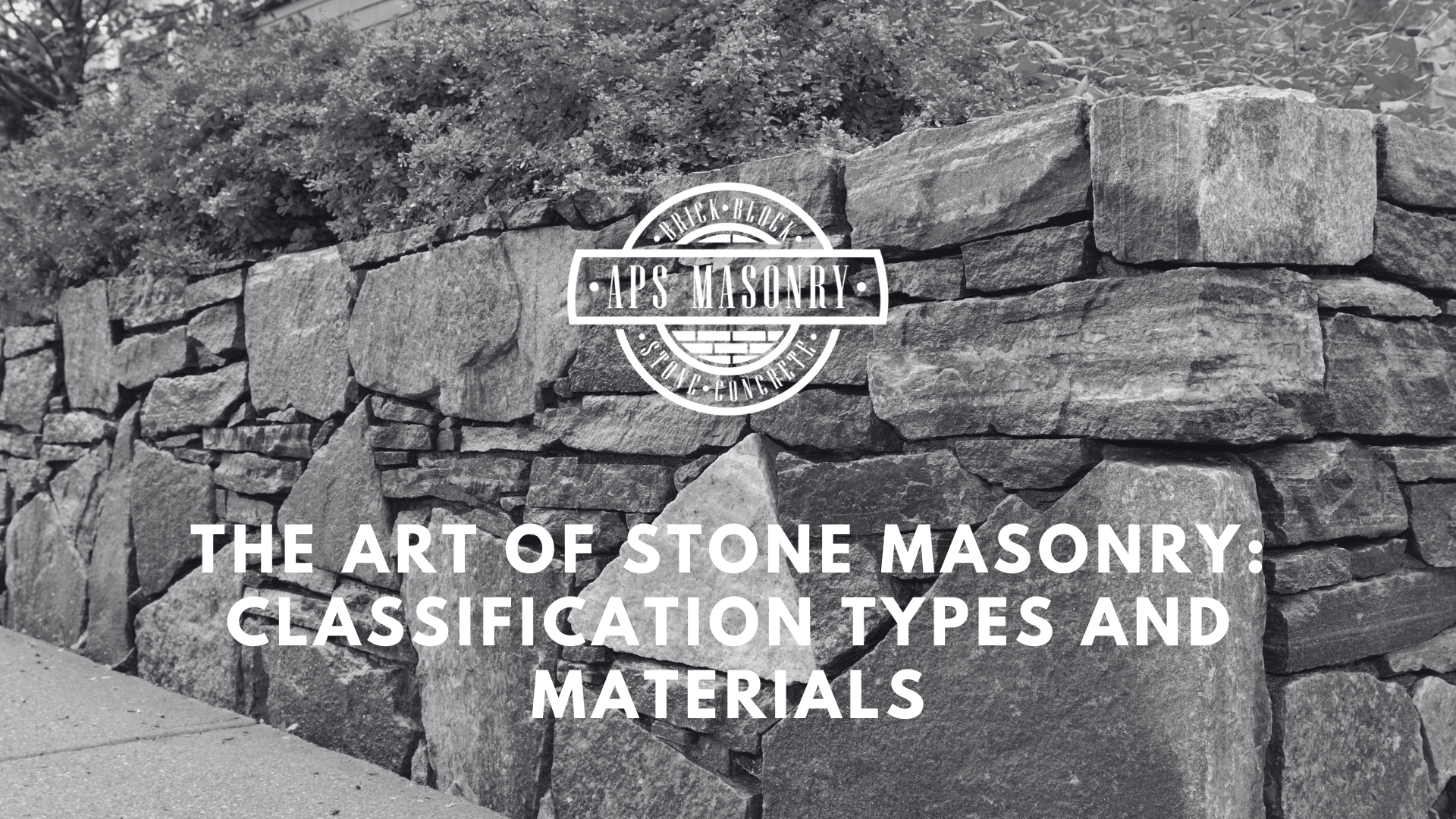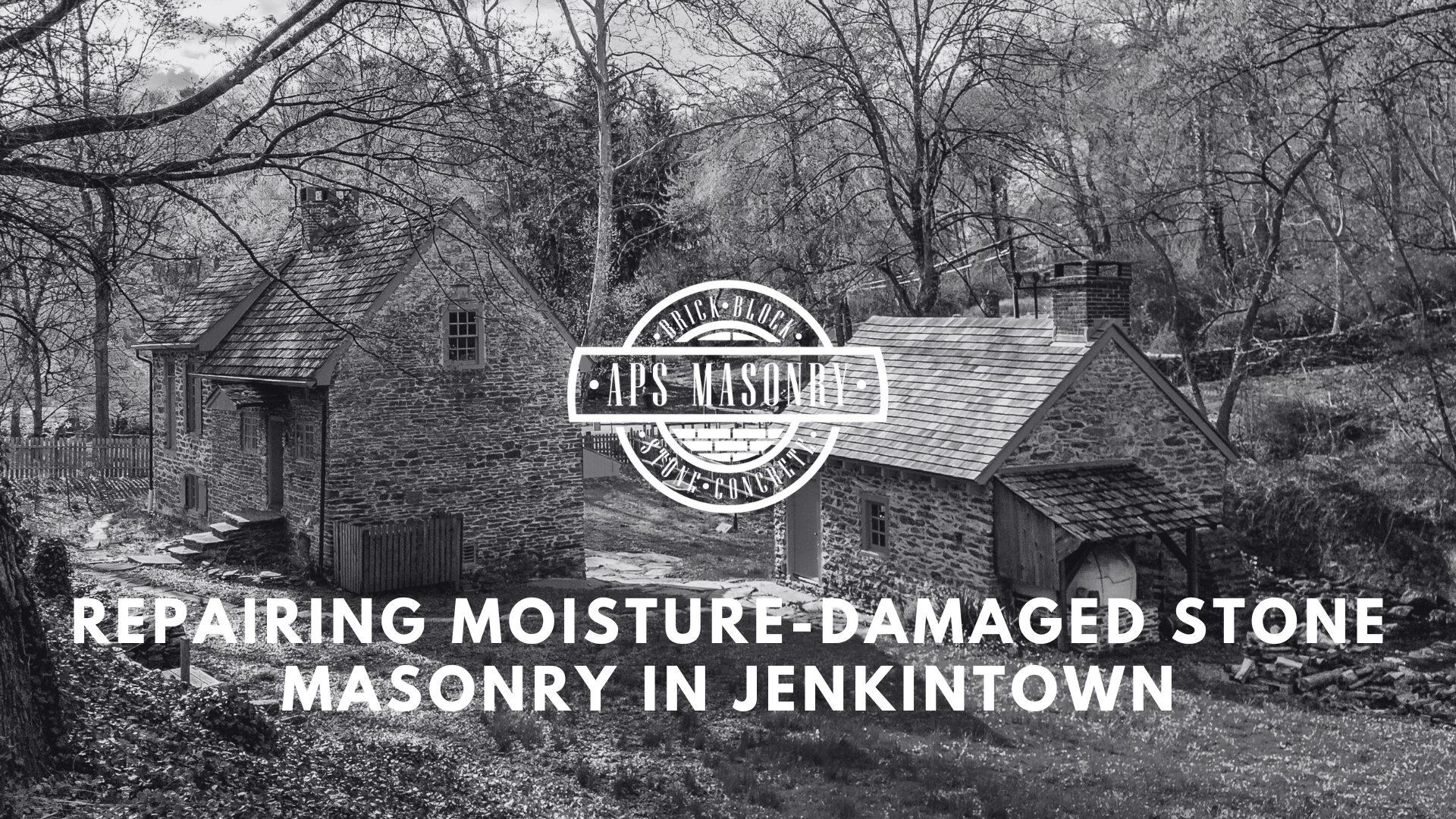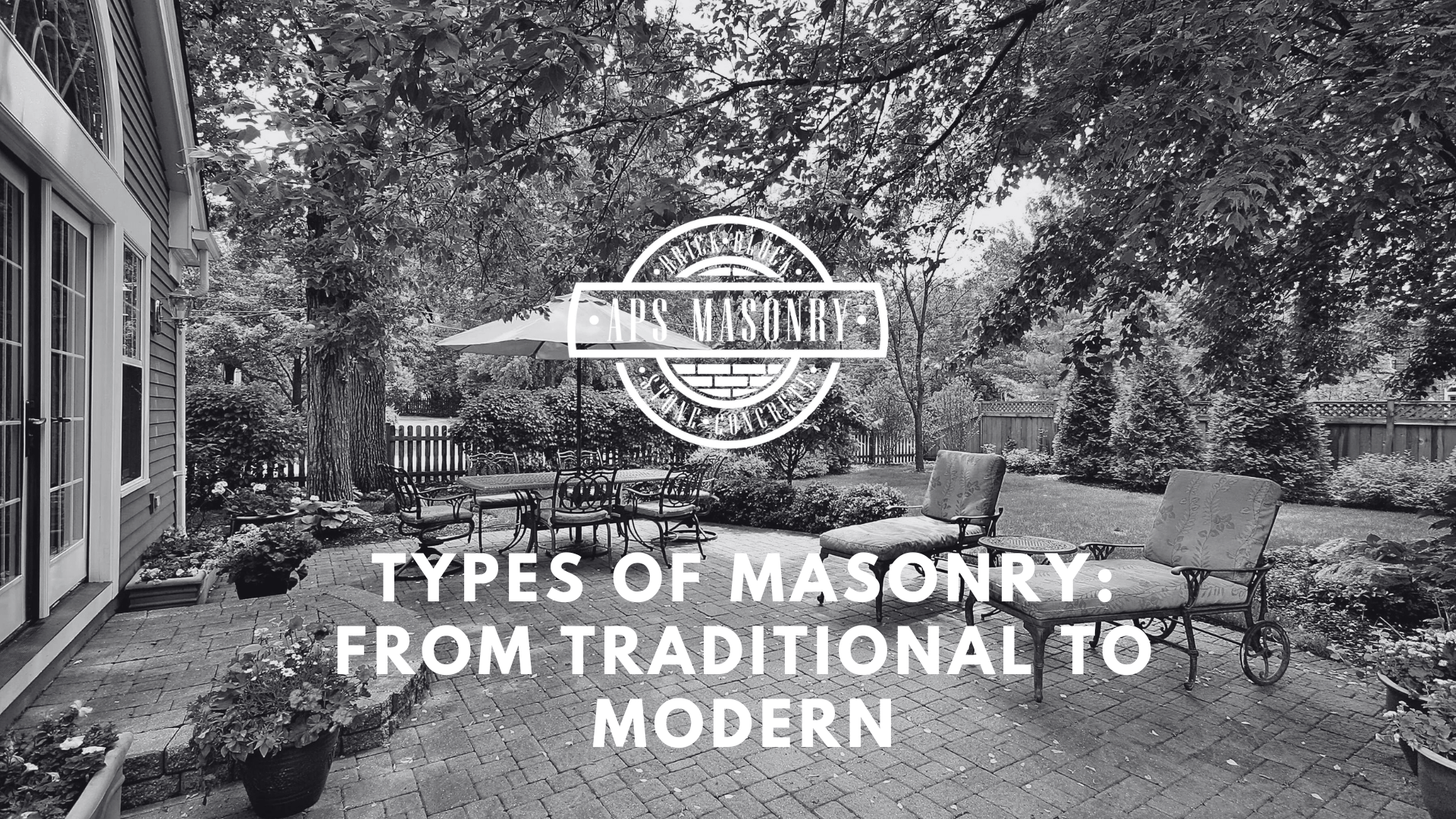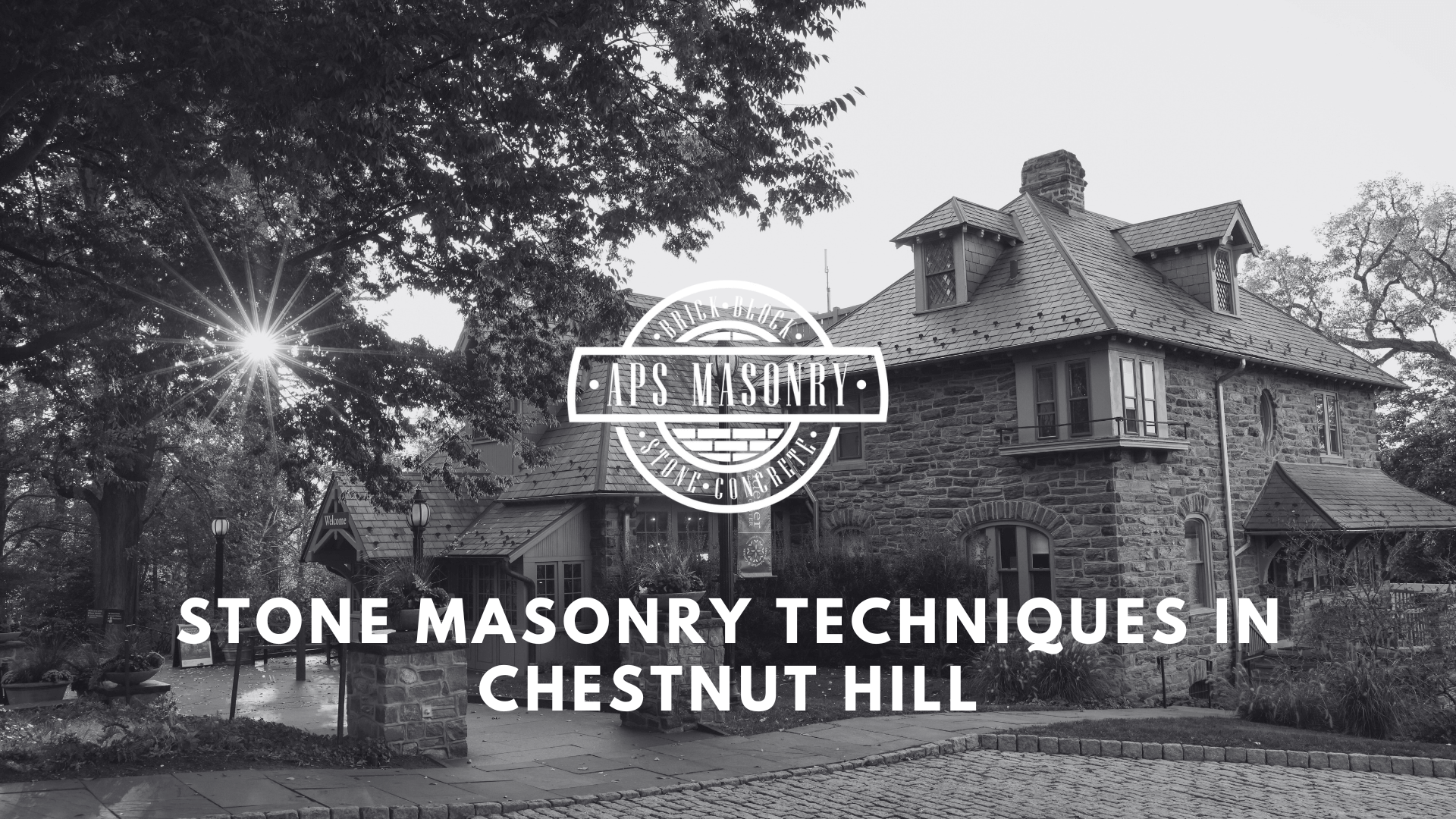Repairing Moisture-Damaged Stone Masonry in Jenkintown
Repairing moisture damaged stone masonry in Jenkintown takes more than patchwork.
9 min read
 Alec Serowatka
:
Jun 28, 2023 10:42:13 AM
Alec Serowatka
:
Jun 28, 2023 10:42:13 AM

Stone masonry is a building technique that uses natural stones to create durable and attractive structures. This guide looks at different types of stone masonry and the materials involved. Rubble masonry uses irregular stones for a rough, rustic look. Ashlar masonry uses neatly cut stones for a more polished appearance. Common materials include granite, limestone, and marble, offering a variety of colors and textures to work with.
Stone masonry has been around for centuries, with famous examples like the Great Pyramids in Egypt and medieval cathedrals in Europe showing its lasting appeal. The key to its strength lies in the natural durability of the stones and the skilled craftsmanship of the masons, resulting in buildings that can withstand the test of time. This guide also covers some basic rules of stone masonry, focusing on proper stone placement, joint distribution, and bonding to ensure stability and longevity.
Stone masonry refers to a time-honored construction technique that involves the skilled art of building or repairing structures using natural stones. It has been widely employed throughout history, leaving an indelible mark on architectural marvels across the globe. The craft of stone masonry combines precision, craftsmanship, and an eye for aesthetics to create structures that are not only durable but also visually striking.
At its core, stone masonry carefully arranges stones, whether irregularly shaped or precisely cut, to form walls, facades, arches, and other architectural elements. These stones can be held together by mortar, a mixture of cement, sand, and water, or they can be dry-stacked, relying solely on the interlocking properties of the stones themselves.
Stone masonry is renowned for its ability to withstand the test of time, making it a sought-after choice for homeowners who value longevity and the inherent beauty of natural materials. By embracing stone masonry, you can infuse your home with a sense of history, elegance, and a touch of nature's grandeur. Whether you desire a rustic stone wall or intricate stone detailing, the possibilities with stone masonry are truly captivating.
Stone masonry is more than just a construction method; it stands as a symbol of human creativity throughout history. From the earliest civilizations, stone masonry has played a crucial role in shaping culture and architecture, leaving behind iconic structures that have endured for centuries. The craft offers insight into the technological, artistic, and cultural advancements of the societies that mastered it.
Throughout history, stone masonry has given life to some of the world’s most remarkable monuments:
In Europe, stone masonry flourished during the Middle Ages, giving birth to towering cathedrals and castles. The Gothic style exemplifies how stone could be used for both beauty and function:
During the Renaissance, stone masonry reached new artistic heights:
In Asia, stone masonry followed a distinct but equally influential path:
While modern construction techniques have evolved, the appreciation for stone masonry's historical significance remains strong. Architects today continue to incorporate stone into their designs, honoring the craft’s enduring legacy.
The benefits of masonry work are extensive, from improved durability to increased resistance to moisture. Let's look at the best benefits of masonry work:
Stone masonry continues to be a preferred choice for construction and design due to its numerous benefits and timeless appeal. Here are some compelling reasons why stone masonry is widely used:
Durability: Stone is known for its exceptional strength and durability, allowing structures built with stone masonry to withstand the test of time. Stone walls and buildings can resist weathering, fire, pests, and other natural elements, ensuring stable structures that require minimal maintenance.
Aesthetics: Stone masonry offers a natural and visually appealing finish that adds elegance, charm, and character to any space. The unique textures, colors, and patterns found in different types of stone create a captivating visual impact, making stone masonry a popular choice for interior and exterior applications.
Sustainability: Stone is a sustainable and eco-friendly building material. It is sourced from the earth and requires minimal processing, reducing its carbon footprint. Additionally, stone structures can provide thermal mass, helping regulate indoor temperatures and reducing energy consumption.
Versatility: Stone masonry offers immense versatility in design possibilities. It can create various architectural elements, including walls, pillars, arches, fireplaces, and decorative features. Whether you prefer a traditional or contemporary style, stone masonry can be adapted to suit a wide range of design aesthetics.
Investment Value: Incorporating stone masonry into your home can increase its value and appeal. The enduring nature of the stone and its timeless beauty make it a valuable asset that stands out in the real estate market.
The art of stone masonry encompasses two main classification types based on the technique and arrangement of stones:
Rubble masonry, or rubble stone masonry, involves using irregularly shaped stones of varying sizes. Unlike ashlar masonry, these stones are often uncut and retain their natural form. The stones are arranged in a seemingly random pattern in rubble masonry, creating a visually distinctive and textured surface.
This type of masonry offers a rustic and informal aesthetic, often associated with a more organic and natural look. The gaps between the stones, known as joints, are filled with mortar or a combination of smaller stones and mortar. The mortar provides stability to the structure and helps secure the stones.
Coursed rubble masonry arranges irregularly shaped stones in roughly horizontal courses or layers. While the stones may vary in size and shape, they are laid more organized, with each course having a consistent height. This type of masonry provides a slightly more uniform appearance while retaining the overall rustic charm.
Uncoursed rubble masonry is characterized by randomly placing irregularly shaped stones without any specific pattern or alignment. The stones are laid according to their available size and shape, resulting in a visually striking and irregular appearance. Uncoursed rubble masonry highlights the natural beauty of the stones. It is commonly used for constructing boundary walls, garden walls, and foundations.
Random rubble masonry shares similarities with uncoursed rubble masonry. It involves using irregularly shaped stones laid without specific patterns or alignment. The stones are placed based on their available size and shape, creating a unique and visually interesting surface. Random rubble masonry is often chosen for its raw and rustic aesthetic, adding character and charm to structures.
Polygonal rubble masonry features stones that are carefully shaped to have polygonal faces, such as hexagonal or octagonal shapes. The stones are fitted together tightly, forming interlocking patterns. This type of masonry showcases skilled craftsmanship and is commonly used for creating visually intricate and appealing facades.
Dry rubble masonry, or dry stone masonry, is a technique where stones are carefully stacked without using mortar. The stones are skillfully fitted together, relying solely on their interlocking properties to create a stable structure. Dry rubble masonry is often used for constructing retaining walls, garden features, and traditional structures, emphasizing the natural beauty of the stones.
Flint rubble masonry utilizes flint stones, a type of hard sedimentary rock, for construction. Flintstones are irregularly shaped and known for their unique colors and textures. This type of masonry showcases the inherent beauty of flint stones, creating visually captivating walls and structures.
Ashlar masonry is a stone masonry technique that involves using precisely cut and dressed stones laid in horizontal courses. This type of masonry provides a refined and polished appearance, creating structures that exude elegance and precision.
The stones used in ashlar masonry are typically rectangular or square and have smooth faces. They are carefully shaped and dressed to achieve consistent dimensions and a uniform finish. The stones are then laid in horizontal rows or courses, each with a consistent height.
Ashlar masonry offers a wide range of design possibilities and architectural applications. It is commonly used for constructing facades, pillars, arches, and ornamental features where a sophisticated and precise look is desired. The precise alignment and uniformity of the stones create a visually appealing, clean, and symmetrical appearance.
Ashlar fine masonry involves using finely dressed stones cut into perfectly square or rectangular shapes. The stones have smooth faces and are precisely aligned to create a refined and polished surface. This type of ashlar masonry is often chosen for projects requiring high precision and a sleek, modern aesthetic.
Ashlar rough masonry retains the naturally rough texture of the stones while maintaining a roughly squared shape. The stones are carefully dressed to have a textured appearance, adding character and authenticity to the structure. Ashlar rough-tooled masonry is often favored for designs that evoke a traditional or historical ambiance.
Ashlar quarry-faced masonry features stones that have been left with their natural quarry face, showcasing the original texture and rugged beauty of the stone. The stones are minimally dressed and shaped to create a more rustic and organic appearance. Ashlar quarry-faced masonry is often used to create a visually striking contrast between the rough face of the stone and the surrounding smooth surfaces.
Ashlar block-in-course masonry involves using rectangular stones laid in courses, creating a block-like pattern. The stones are precisely aligned and spaced, creating a distinct visual effect. This type of ashlar masonry offers a clean and structured appearance, often used to create architectural elements that require a bold and geometric design.
Ashlar chamfered masonry features stones with beveled or chamfered edges, creating a unique visual effect. The chamfered edges add depth and dimension to the masonry, improving its architectural detailing and aesthetic appeal. Ashlar chamfered masonry is commonly employed to create intricate and eye-catching designs.
Ashlar facing is applying dressed stone veneers or facings onto a substrate wall. The dressed stones are attached to the wall, typically with mortar, to create a visually appealing and durable finish. Ashlar facing allows for incorporating the elegance and precision of ashlar masonry into new construction and renovating existing structures.
Stone masonry employs a variety of natural stones, each with its own set of properties, making them suitable for different structural and aesthetic purposes. Below are the top materials used in stone masonry:
The primary material in stone masonry is, of course, stone. To guarantee a strong, durable structure, the stone blocks selected must meet specific criteria:
The choice of stone can greatly affect the final look and functionality of the masonry. Some commonly used types of stone in construction include:
Mortar serves as the binding material in stone masonry, providing structural stability by holding the stones together. It’s typically made by mixing:
The right choice of mortar depends on various factors, such as the type of stone used, environmental conditions, and load-bearing requirements. The mortar plays several important roles:
Creating high-quality stone masonry involves more than just laying stones—it requires deep knowledge of the material and the proper techniques to ensure long-term durability and aesthetic appeal. Our team of skilled masons follows time-tested principles to ensure every project is built to last. Here’s why working with professionals is key:
Placing each stone correctly is crucial to the strength and stability of a masonry structure. Our masons know how to select and position stones to maximize their natural strength, ensuring your project stands the test of time.
Properly managing the joints between stones—both vertical and horizontal—requires skill to avoid weak points that can compromise the structure. We expertly offset and distribute joints to prevent stress concentrations and ensure lasting integrity.
Our team carefully balances structural needs with aesthetic considerations. By ensuring level courses and avoiding noticeable "stepping," we create masonry that is not only strong but also visually appealing.
From selecting the best stones to ensuring substantial bonding, every detail matters in professional stone masonry. Our commitment to precision ensures that your project looks flawless while maintaining superior strength.
Stone masonry requires skill, precision, and experience. At APS Masonry Contracting, we bring over 10 years of expertise to make sure that your project is done right - from stunning facades to durable walls and foundations and brick masonry. We handle the details, so you can enjoy beautiful, long-lasting results.

Repairing moisture damaged stone masonry in Jenkintown takes more than patchwork.

Let's explore the evolution of masonry from traditional to modern methods, catering to diverse construction needs. It covers how old techniques...

Stone masonry techniques in Chestnut Hill built to last. APS delivers quality craftsmanship, masonry repair, and full restoration for historic homes.